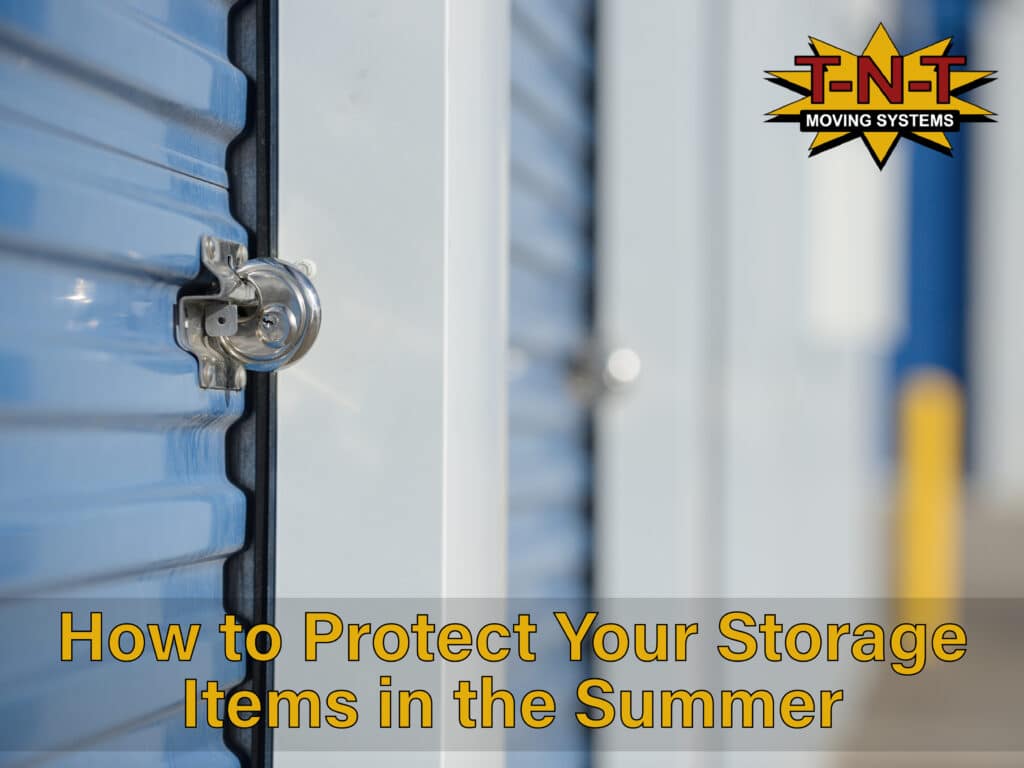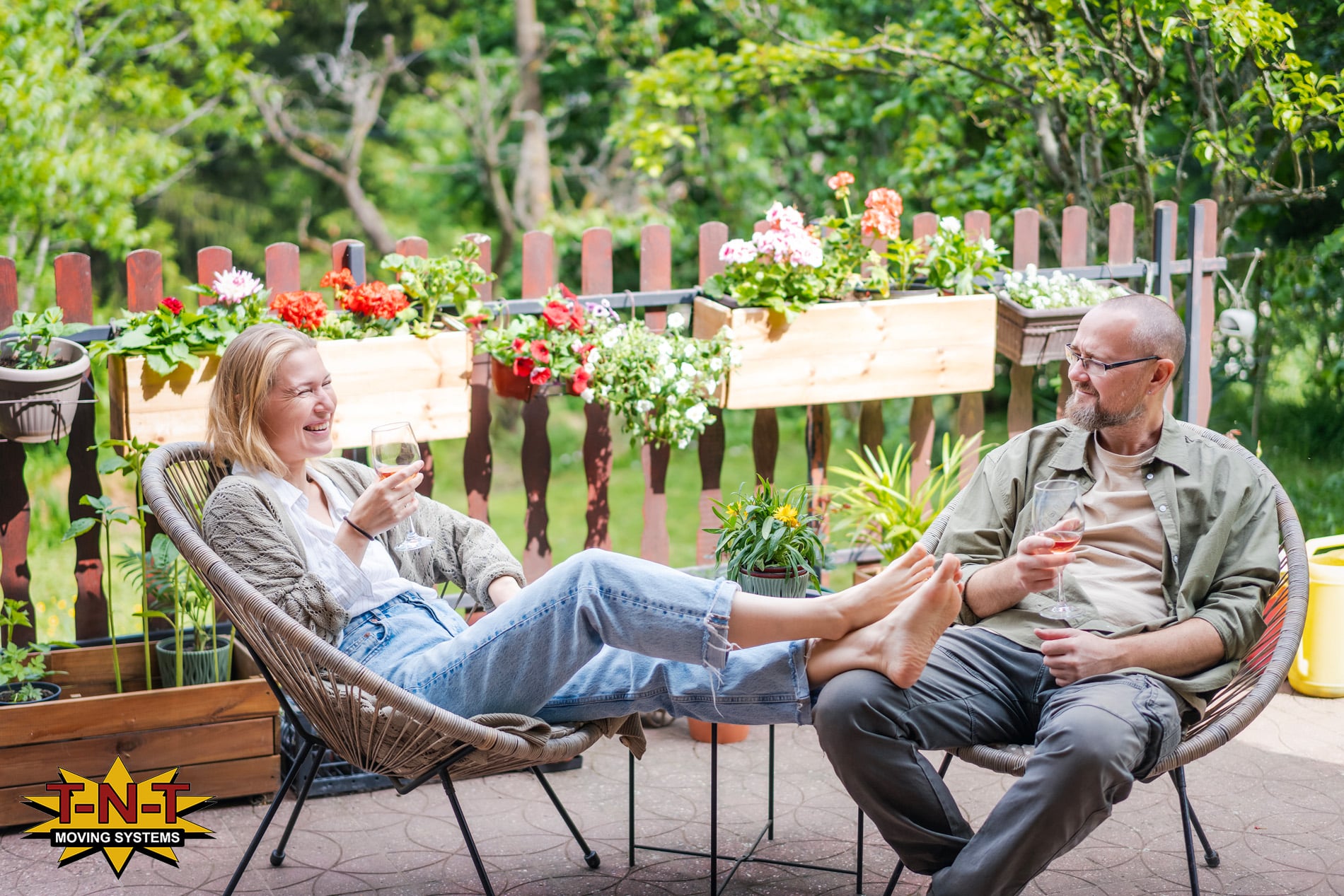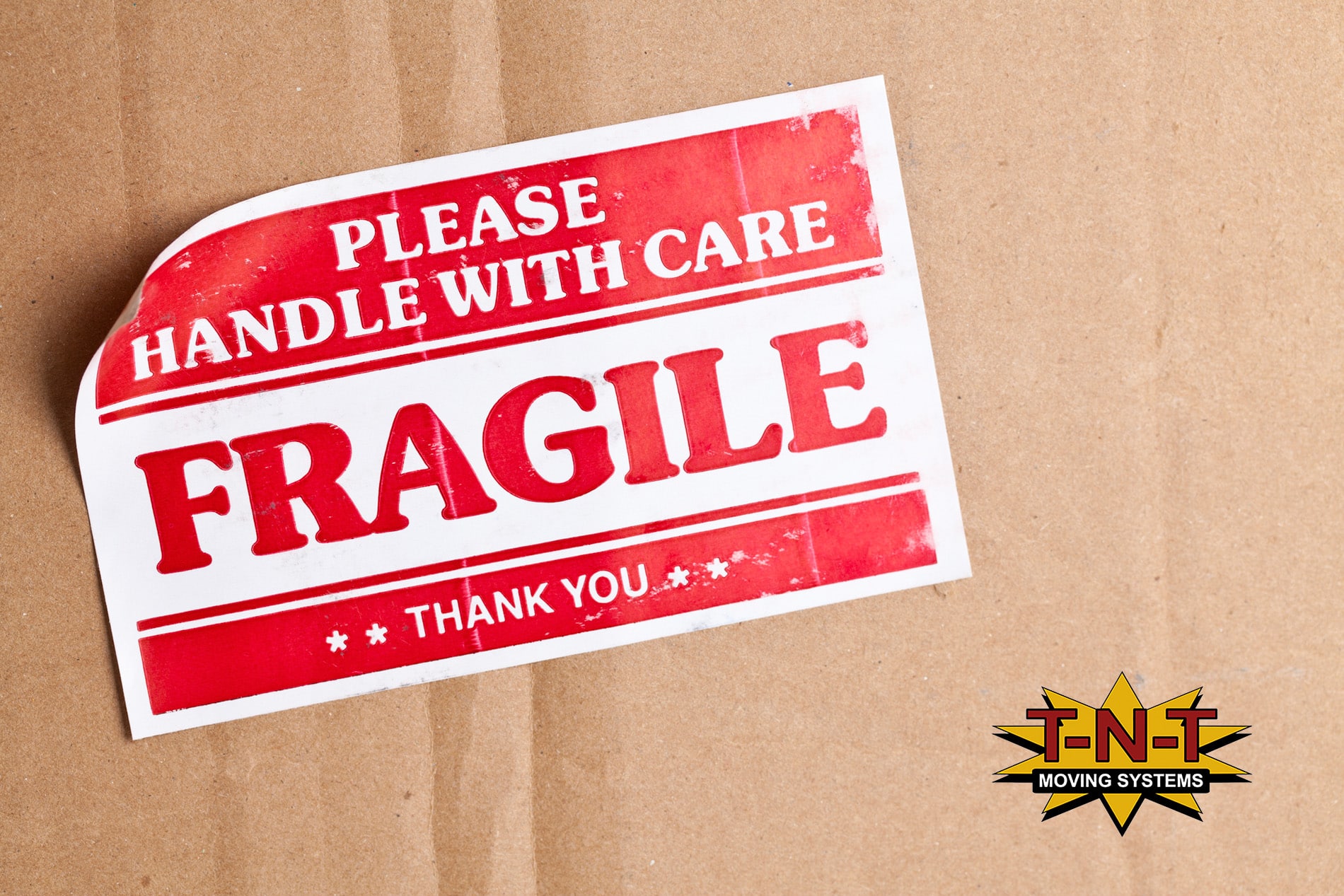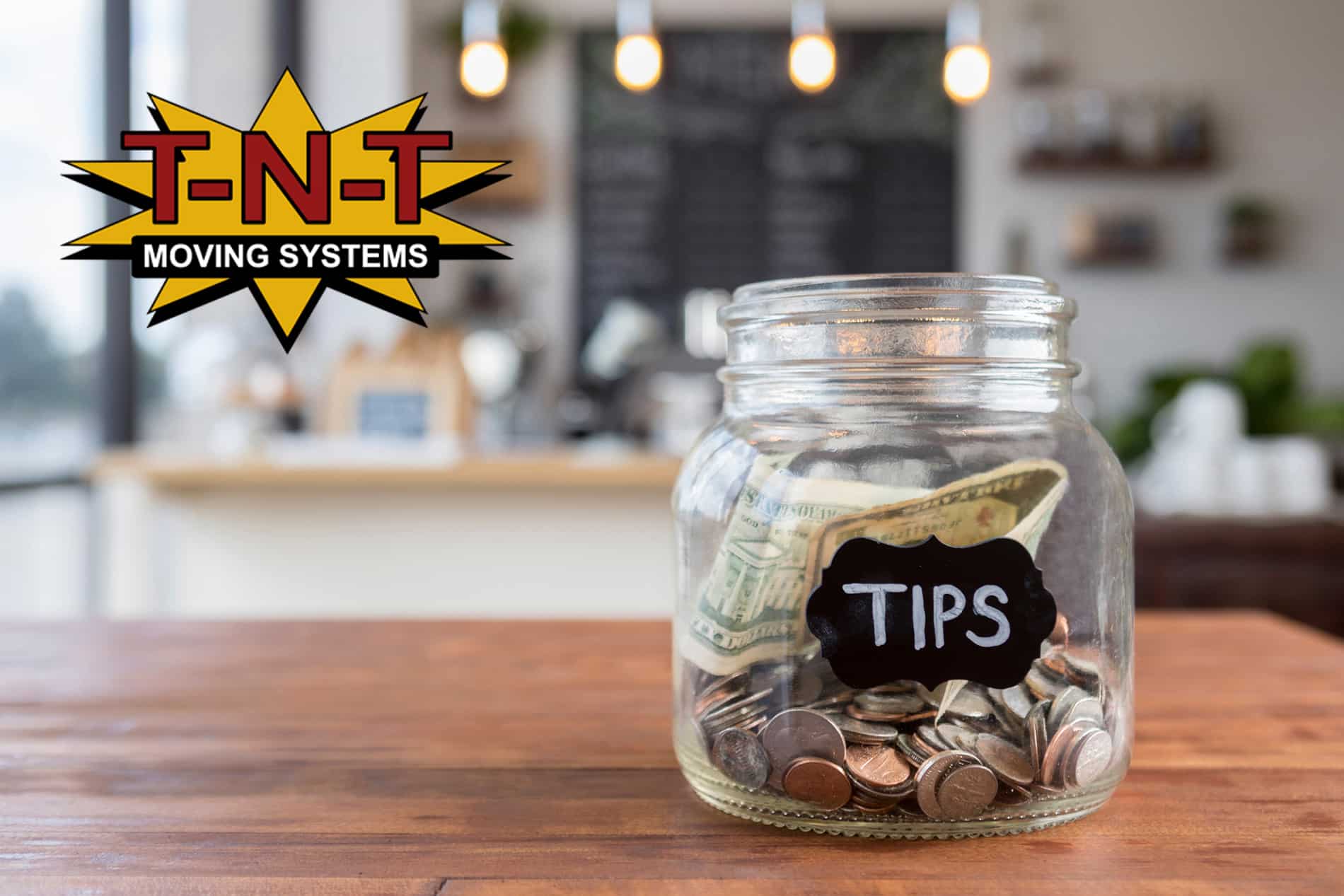How to Protect Your Storage Items in the Summer

Do you have belongings you don’t have room for in your current home but you’re not ready to part with? Maybe you have collectibles passed down through the family or home decor that you’re waiting to use in a future home. Perhaps you need to get some things out of your house while you sell your home and move to another one.
Keeping your belongings in a climate-controlled storage unit is the safest, most convenient way to protect them when you can’t store them at home.
But it’s essential to choose a suitable facility and pack your items mindfully to prevent damage or theft. Below, TNT Moving Systems lays out the details of protecting your storage items this summer!
What’s the Purpose of Climate Controlled Storage?
The ultimate purpose of a climate-controlled storage facility is to maintain consistent temperatures and humidity levels. An effective climate-controlled unit will typically stay between 55° and 85°F despite where it is located. Most of these units exist at storage facilities with indoor storage areas, but some drive-up and outdoor facilities offer climate-controlled spaces as well.
The moisture created in any environment depends primarily on how temperature and humidity interact. There’s more moisture when a climate or space has high temperatures and humidity. You don’t want water developing around your storage items, so it’s critical to control the temperature and humidity where you’re storing them.
What Should You Keep in Climate Controlled Storage?
Ideally, you’ll keep all the belongings you don’t have room for in a climate-controlled unit, though some objects are more susceptible to damage and destruction. Here are some everyday items that moisture can significantly impact:
- Coins, stamps, artwork, and other collectibles
- Antiques
- Furniture
- Vinyl records, DVDs, and other media
- Electronic devices
- Household appliances
- Musical instruments
- Medications and medical supplies
- Toiletries and cosmetics
- Athletic equipment
- Lace and leather clothing
- Fine wine
- Physical photographs and essential documents
- Any items with wood, leather, upholstery, metal, or wicker
Consider how these items react with moisture, and you’ll understand why they should be kept in climate-controlled storage. For instance, water tends to discolor leather and create mold and mildew. Wood can rot, crack, and warp. Electronics exposed to enough moisture can rust out and fail to work. And photographs, important documents, and other paper items can be rendered illegible or even disintegrate.
Sometimes, it’s challenging to determine whether you should store a specific item at a climate-controlled facility, especially when it’s unclear what materials it contains. To keep it simple, plan to put anything associated with these five eventualities in a climate-controlled unit:
- Sensitivity to extreme temperatures
- Built or designed for specific climates
- Expansion or contraction from extreme heat
- Discoloration, deterioration, cracking, or warping in high-moisture environments
- Mold and mildew from moisture
Moreover, any item you deem sentimental, rare, or valuable in any other sense belongs in a climate-controlled storage unit. It’s simply the surest way to keep your things secure and safe from damage.
Are There Other Factors That Require Climate-Controlled Storage?
While you should evaluate every item to gauge whether it belongs in a climate-controlled storage unit, several other factors also play a part. Here are some conditions to consider when determining where to keep your belongings:
Heat and Humidity
If you live in an area that generally experiences high heat and humidity, you’ll want to minimize the impact on all of your belongings. Even well-secured storage units are vulnerable to outside elements, meaning that moisture exposure is very likely for any items you keep in a storage unit that isn’t climate-controlled. In other words, always use climate-controlled storage if you live in a hot and humid region!
Valuable Belongings
If you need to store any items that are precious to you, putting them in a climate-controlled space is the only way to go. Even if the objects don’t contain materials prone to moisture damage, keeping them in a controlled environment offers the best chance of remaining in their current condition. This goes for anything collectible, antique, irreplaceable, or that holds significant sentimental or monetary value.
Long Storage Periods
Most areas of the country experience varying climate conditions throughout the different seasons. If you plan to put your belongings in storage for an extended period (a month, a year, several years, etc.), opt for a climate-controlled unit to protect your things from temperature changes.
Your region may have milder temperatures and humidity in spring and fall, but those conditions will change drastically when summer and winter hit. Using a reputable storage facility can prevent elements and extreme shifts in temperature and humidity from wrecking your belongings.
Using a Standard Storage Unit
Not surprisingly, climate-controlled storage units are more expensive than their standard counterparts. If you have a lot of belongings to put into storage, you may be looking to save money where you can.
You can probably get away with keeping any items not mentioned above in a standard storage unit for the short term. Short-term storage typically means no longer than a month in an outdoor unit and no longer than three months in an outdoor unit.
With that said, remember to consider the overall climate in your region.
A climate-controlled option is the safest bet for storing anything in a hot and humid environment.
How to Protect Your Items in Storage
Resolving to keep your belongings in a climate-controlled storage unit is an excellent first step to protecting them from damage. But it also matters which facility you choose and how you store your items.
It’s critical that the storage facility is secure and can protect all your objects from the elements. Even the most reputable facilities experience problems now and then. Be mindful of any potential dangers and take practical steps to prevent damage. Let’s discuss the most common storage facility hazards and how to protect your things and yourself from them:
Keep the Unit Ventilated
If you plan to store items in a storage facility long-term, your storage unit must maintain proper temperature and adequate ventilation. Extreme temperatures, whether hot or cold, can quickly ruin specific items, so it’s essential to choose a climate-controlled option when storing things in a climate that experiences extreme variations in temperature.
The lack of ventilation is another common issue for storage facilities. Confirm with a manager at any facility you’re considering that each unit is well-ventilated, and read online reviews to see if anyone has complained about this problem.
Moreover, trying to fit too many things into a single storage unit can also lead to poor ventilation. It removes air pockets between items that would typically promote air circulation and minimize moisture. If you pack the space too tightly, your belongings will be vulnerable to moisture, even in a state-of-the-art facility.
Consider the Risk of Fire Damage
It’s not the most common threat, but consider fire damage when keeping your belongings at a storage facility. The tiniest spark can morph into an overwhelming fire at a storage facility because of the items that people typically store there.
Most units contain cardboard boxes and books, wood furniture, clothing, or other highly flammable materials. These materials in a highly concentrated area can lead to flames spreading rapidly.
Make sure any facility you consider has established stringent safety measures to protect units and belongings from fires. Policies about storing flammable chemicals or combustible materials and providing multiple fire extinguishers throughout the facility are good indicators that a facility seriously considers the risks of fire damage.
Prevent Water Damage
Flooding is a persistent problem in many parts of the country, leaving even top-notch storage facilities susceptible to water damage. New England and the mid-Atlantic region are especially vulnerable to flooding.
Here’s the thing: The smallest amount of water can do massive damage to your belongings. If your unit is in a low-lying area that experiences flooding each year, you cannot ignore the possibility of water damage. Even if water doesn’t ruin your precious belongings, it can severely harm their condition. Moisture and water often work into storage units through small cracks formed by the units’ roofs and doors expanding during summer.
While flooding is a genuine concern, most water damage occurs because of moisture. A bit of humidity can wreak havoc on clothing, wooden furniture, and other items, so it’s essential to cover all your items in plastic. You can also use moisture-absorbing products in your unit to protect your belongings.
Safeguard Your Items from Theft
Storage facilities must take significant measures to keep all the items in their units secure. But when you sign a self-storage contract, understand these contracts are written to render facilities blameless in most situations.
Storage companies simply couldn’t survive if they were held accountable for every renter’s belongings in the event of a break-in or theft. But you should take extra steps to keep your belongings safe because theft is among the most common problems for storage facilities.
Search for a facility with 24/7 surveillance and protection, and ask the manager about additional security measures in place. Don’t be afraid to ask about recent break-ins, whether there are security guards working, how you can protect your individual unit and other questions.
How to Find Your Storage Unit
The best way to learn about high-quality storage facilities is to get references from people you know. Asking about personal experiences and getting objective opinions from people you trust will prove much more effective than relying on the ads you see around town and online created by the storage companies themselves.
With that said, checking storage search sites and reading reviews can also help you locate the best options near you. Remember to consider climate control and surveillance before signing a contract. Here are a few other features to look for:
- Electronic gate access and onsite management
- Electrical access (meaning the storage unit has an electrical outlet)
- 24/7 access (essential for anyone who needs to access their unit outside of business hours)
- Drive-up access
How to Keep Your Storage Unit Organized
Remember that you don’t want to pack your self-storage unit too tightly because it can restrict air circulation and eventually cause moisture. With that in mind, pack your items in smaller boxes, and don’t use as much cushion as you would for shipping.
Besides, you’ll probably need to stack your boxes in the unit, and empty space in the boxes can cause them to collapse. Moreover, be sure to label your boxes so you know precisely what they contain; this will make things much easier when moving things out of storage.
Another thing to consider is adding shelving units along the walls of your unit. This can help you securely store belongings while maximizing vertical space. And you’ll be able to easily access the tools and other items you keep on the shelves.
Conclusion
Using a self-storage unit can help you conveniently store belongings that you can’t currently fit in your home. Remember to research different facilities in your area and opt for a climate-controlled unit if one’s available, especially if your region gets hot and humid during summer.
Once you find the right storage unit, pack your items with a strategy to make the most of the space. And if you’re moving homes, connect with TNT Moving Systems to get a quote for our top-notch services!




